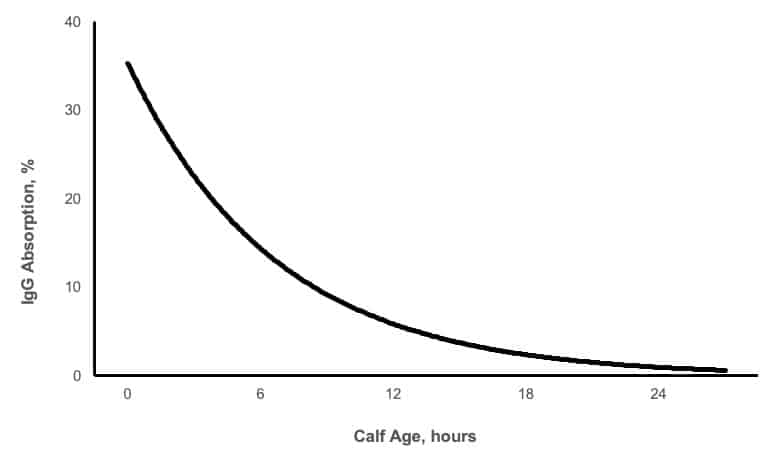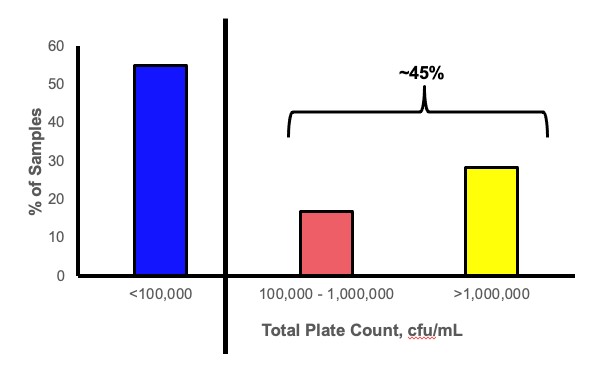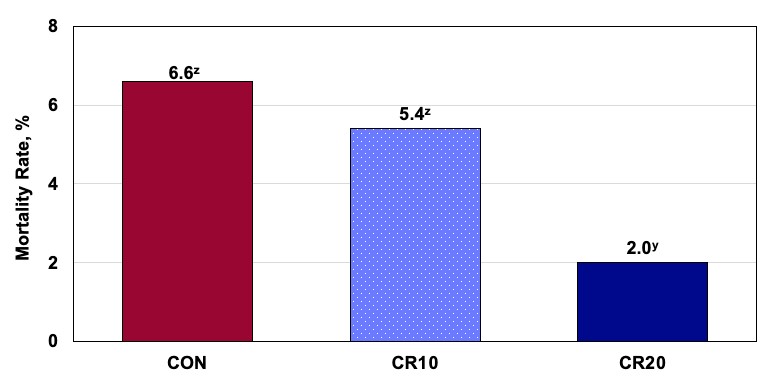Using Colostrum Replacer to Prevent Protocol Drift
*Post contributed by Dr. Adam Geiger, Research Nutritionist | Lactation Physiologist | Calf Technical Consultant, Zinpro Corporation
Just about every producer globally understands the importance of colostrum to the newborn calf. Most producers also know how important well-defined protocols are to calf performance and health. However, I have seen it repeatedly: Protocols are put in place at the dairy to solve a problem, but after that problem is solved, eventually protocol drift occurs, and the same problems arise again. Often, I see this impacting colostrum management. High-quality maternal colostrum is often considered nature’s perfect food, as it should be. Colostrum is packed with nutrients, and most importantly, immunoglobulins that the calf needs to start life on the right track. However, many technologies exist that can help improve a colostrum program and prevent protocol drift in this area. One such technology is the colostrum replacer. Although colostrum replacers do not supply the same amount of IgG as high-quality maternal colostrum, strategic use of a colostrum replacer can be critical to a well-managed colostrum program. Colostrum replacers can be used to prevent protocol drift in two key areas: Timeliness and cleanliness.
Timeliness
Gut closure begins in the newborn calf shortly after birth with the introduction of the first molecule into the gut (See Figure 1). Therefore, timely feeding of colostrum (i.e., within the first 2 hours of birth) is a critical component of any colostrum program. However, protocol drift may occur, and the first feeding of colostrum may be delayed due to a variety of factors such as:
- Timing of birth of the calf (late at night for example)
- Lack of available colostrum on the dairy
- Thawing protocols that may prevent timely feeding
- issues

Figure 1. Example of reduction in IgG absorption following birth due to gut closure. At birth,
calves can often absorb > 50% of IgG present in the gut. Over time, this
decreases. Strategically incorporating a colostrum replacer in these situations can prevent protocol
drift and prevent failure of passive transfer of immunity. One example is to use
colostrum replacers for calves born at night. Oftentimes, calves born at night
are not fed until employees arrive the next morning. Colostrum replacers can be
used by night employees to ensure calves are fed promptly or can be used
immediately upon employee arrival in the morning to limit the delay in feeding
as much as possible. Another aspect of timeliness is the
time it takes to milk our fresh cows. The longer it takes to milk a fresh cow,
the lower colostrum quality will be. Using a colostrum replacer when milking
time is delayed takes the guesswork out of how quality may be affected and ensures calves are fed enough IgG to achieve passive transfer of immunity.
Cleanliness
Perhaps the single greatest aspect of colostrum management I see fall victim to protocol drift is cleanliness of colostrum and colostrum collection/feeding equipment. Bacterial contamination of collection/feeding equipment promotes bacterial growth in the colostrum which has been shown to depress IgG absorption. . Our goal is to feed colostrum that has a total plate count < 100,000 cfu/mL. However, a study out of Wisconsin has shown that roughly only 55% of colostrum meets this cut point, with ~20% exceeding 1,000,000 cfu/mL (See Figure 2). Bacteria contamination can occur during collection, storage, or feeding, and can often be due to a lack of proper cleaning of the equipment involved in these steps. Delays in feeding after milking or cooling to storage temperatures <40oF promote accelerated bacterial growth . Using a colostrum replacer can eliminate the risk of bacterial overgrowth and impairment of IgG absorption. However, poorly cleaned feeding equipment can still result in bacteria being fed to calves. Even colostrum replacers are not immune to protocol drift, but with a continued emphasis placed on cleaning of equipment, colostrum replacers can end many sources of bacterial contamination.

Figure 2. Data from a 67-dairy summary indicating bacterial contamination of colostrum samples. It can be clearly seen that roughly 45% of colostrum is greater than the standard recommendation of 100,000 cfu/mL, with many samples testing over 1,000,000 cfu/mL (Morrill et al., 2012).
Another use for colostrum replacers:
Regardless of how well the colostrum area is managed, protocol drift can still occur and lead to a disease outbreak in the youngest calves. Colostrum replacers can also be used as a feed ‘additive’ in the milk or milk replacer post-day 1 to help lessen the severity of disease. This approach works by supplying the gut with IgG that is NOT absorbed into the bloodstream, but rather remains locally in the gut to sequester bacteria and negate their harmful effects. Recent work conducted in California has shown that feeding 20 g of IgG per day for the first 14 days of life (following initial colostrum feeding) reduced the use of antibiotics to treat scours by ~25% and reduced death loss from 6.6 to 2% (See Figure 3). Additionally, strategic incorporation of colostrum powder into a calf-rearing program has been shown to reduce the risk of BRD diagnosis by ~64% and the presence of lung consolidations by ~50%. Taken as a whole, supplementing calves with colostrum powder after day 1 can help improve calf health and decrease disease severity in the event that protocol drift does occur, and your calf population is left vulnerable.

Figure 3. Feeding 20 g of IgG from a colostrum replacer (CR20) reduces death loss from 6.6 to 2.0% on a large commercial dairy (> 1,000 calves on study). Data with differing superscripts indicates differences (P < 0.05; Geiger et al., 2019). The importance of colostrum management to the newborn calf cannot be overstated. Many farms have strict colostrum protocols about feeding and cleaning of colostrum and the equipment used to feed, store, and collect colostrum. However, as things go smoothly, protocol drift often occurs, and this is when a strategically used colostrum replacer can have a significant, positive impact on a calf program and prevent calves from experiencing passive transfer. Strategically use of colostrum replacer after day 1 can be treated as an insurance policy to lessen the potential impact of protocol drift on your dairy if it ever does occur. Consider how a colostrum replacer fits as part of your successful calf and colostrum management program.
